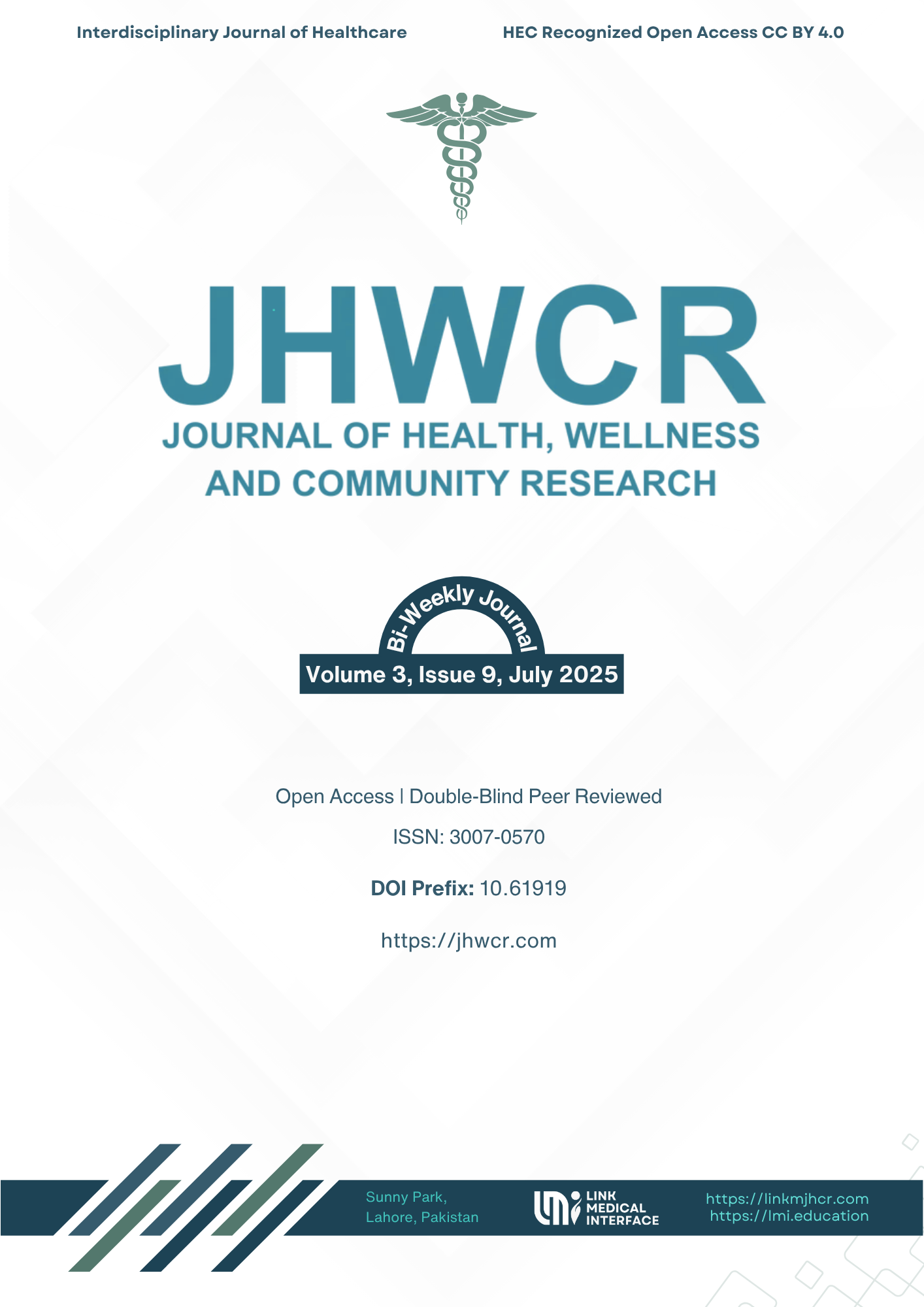Comparative Effect of Instrument Assisted Soft Tissue Mobilization Versus Kinesio-Taping for Chronic Mechanical Low Back Pain
DOI:
https://doi.org/10.61919/b74qxa19Keywords:
chronic mechanical low back pain, instrument assisted soft tissue mobilization, kinesio-taping, randomized controlled trial, pain, disability, range of motionAbstract
Background: Chronic mechanical low back pain (CMLBP) is a prevalent musculoskeletal condition associated with substantial disability, reduced quality of life, and significant socioeconomic burden globally. Non-invasive therapeutic approaches such as Instrument Assisted Soft Tissue Mobilization (IASTM) and Kinesio-Taping (KT) are commonly used in clinical practice, yet direct comparative evidence regarding their effectiveness for CMLBP remains limited and inconclusive. Objective: To determine and compare the effects of IASTM and KT on pain intensity, functional disability, and lumbar range of motion in adults with CMLBP. Methods: This randomized controlled trial was conducted at two tertiary hospitals in Lahore, Pakistan, between January and June 2024. Sixty participants aged 22–45 years with CMLBP lasting ≥12 weeks and a minimum pain intensity of 3 on the Visual Analog Scale (VAS) were randomized equally into IASTM and KT groups. Interventions were administered thrice weekly for four weeks. Primary outcomes included changes in VAS, Oswestry Disability Index (ODI), and lumbar range of motion (ROM), measured at baseline and post-intervention. Data were analyzed using non-parametric tests with a significance threshold of p<0.05. Results: Both groups showed significant within-group improvements in all outcomes (p<0.001). Post-treatment between-group comparisons revealed superior improvements in the IASTM group for pain reduction (median VAS reduction 39.7% vs 33.8%, p<0.001), disability (ODI reduction 53.1% vs 44.7%, p<0.001), and ROM gains across all planes (p<0.001). The proportion of composite responders was higher in IASTM (93%) than KT (77%). Conclusion: IASTM is more effective than KT in reducing pain, improving function, and enhancing lumbar mobility in individuals with CMLBP, supporting its use as a preferred non-invasive intervention in this population.
Downloads
Published
Issue
Section
License
Copyright (c) 2025 Moazma, Junaid Ijaz Gondal, Naveed Babur, Tehreem Akram (Author)

This work is licensed under a Creative Commons Attribution 4.0 International License.


